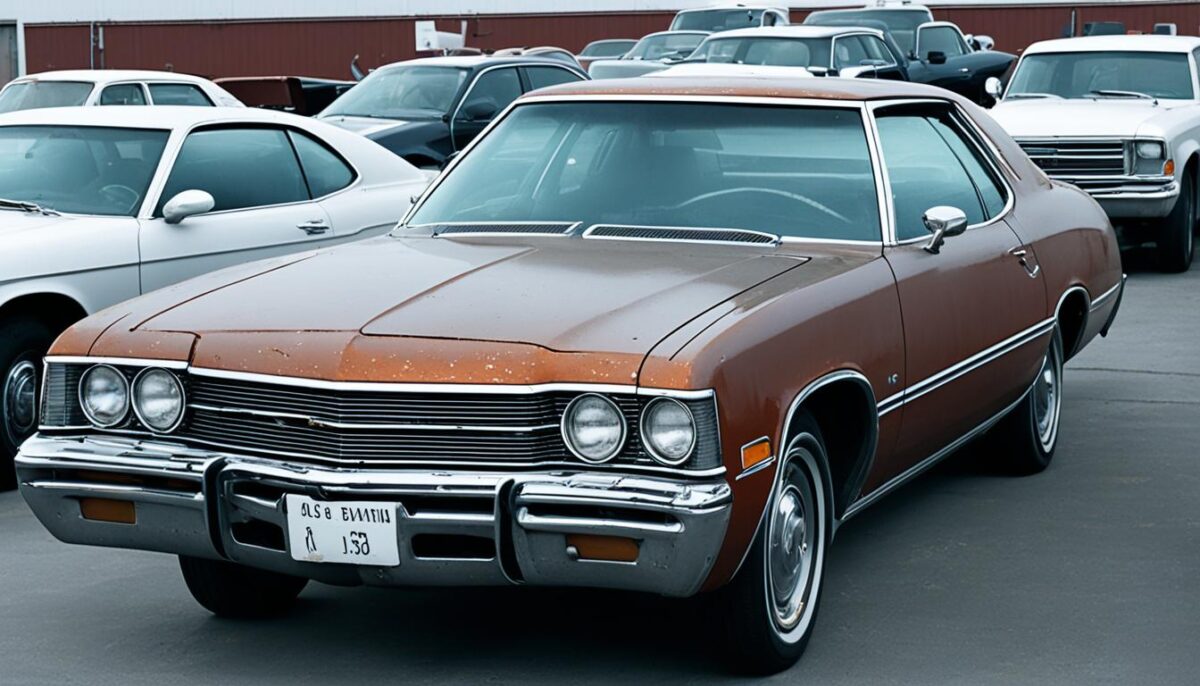In the world of car auctions, the term “stationary” carries specific meaning and implications for buyers. Understanding what stationary means in this context is crucial for making informed purchasing decisions. In this article, we’ll explore the definition of stationary mean car auctions, how it differs from other auction types, and why it’s an important factor to consider when bidding on vehicles.
Car auctions can be a dynamic and exciting way to find great deals on vehicles, but it’s essential to understand the terminology used in the industry. One of the key terms that buyers need to be familiar with is “stationary,” which refers to a specific type of car auction. Unlike other auction formats where vehicles are driven across a stage or around a track, stationary auctions feature cars that remain in a fixed position during the bidding process.
Navigating the nuances of stationary car auctions can provide valuable insights for buyers looking to make informed purchasing decisions. By understanding the implications of a vehicle’s stationary status, we can better assess its condition, value, and the potential risks or opportunities associated with bidding on it.
Understanding the Terminology of Car Auctions
Before diving into the specifics of stationary mean car auctions, it’s crucial to familiarize ourselves with some common terminology used in the auto auction industry. Terms like “salvage,” “reserve price,” and “as-is” can all impact the buying and selling process. By understanding these key concepts, we can better navigate the auction landscape and make more informed decisions.
Common Terms Used in the Auto Auction Industry
- Salvage: A vehicle that has been deemed a total loss by an insurance company due to damage or theft. These vehicles are typically sold at auction for a discounted price.
- Reserve Price: The minimum price the seller is willing to accept for a vehicle. If the bidding doesn’t reach the reserve price, the vehicle may not be sold.
- As-Is: A term that indicates the vehicle is being sold in its current condition, without any warranties or guarantees from the seller.
- Lot: The designated area or space where vehicles are displayed and auctioned off.
- Bid: The amount a buyer offers to pay for a vehicle during the auction.
- Gavel: The tool used by the auctioneer to indicate the start and end of a bid, as well as to signify the sale of a vehicle.
Demystifying the Auction Process for Buyers
The car auction process can seem intimidating, especially for first-time buyers. However, with a little preparation and understanding of the key steps, buyers can approach auctions with confidence. Let’s walk through the typical auction process, from registration to bidding and post-auction procedures, to help you feel empowered as a prospective buyer.
- Registration: Arrive early and complete the necessary paperwork to register as a bidder. This will typically involve providing identification, proof of funds, and possibly a refundable deposit.
- Inspection: Closely inspect the vehicles you’re interested in, paying attention to their condition, mileage, and any visible damage or issues.
- Bidding: When the auctioneer calls a vehicle, be prepared to bid promptly and confidently. Keep track of the current bid and be ready to increase your offer if needed.
- Post-Auction: If you’re the winning bidder, be prepared to complete the transaction and arrange for the vehicle’s transportation. It’s also important to understand any associated fees or taxes.
By familiarizing yourself with common auto auction terms and the overall process, you’ll be better equipped to navigate the world of car auctions and make informed decisions as a buyer.

Stationary Mean Car Auction: Decoding the Phrase
When it comes to navigating the world of car auctions, the term “stationary” is one that buyers need to fully understand. This phrase refers to vehicles that are non-operational or unable to be driven under their own power. Stationary cars at auctions may have a range of mechanical issues, physical damage, or other conditions that prevent them from being road-worthy.
Understanding the implications of a car’s stationary status is crucial for buyers evaluating potential purchases. These vehicles may have a lower auction price compared to their operational counterparts, but they also come with unique considerations and risks that must be carefully evaluated.
Identifying Stationary Vehicles
Stationary vehicles at car auctions are often easily identifiable. They may be clearly marked with signs or placards indicating their non-running status, or they may be segregated into a designated area of the auction lot. Savvy buyers should always inspect the vehicle’s condition and documentation to understand the full extent of any issues or damage.
| Auction Condition | Potential Issues | Value Considerations |
|---|---|---|
| Stationary Vehicles |
|
|
By understanding the unique characteristics of stationary vehicles, buyers can make more informed decisions at car auctions and potentially find hidden gems that can be restored to their former glory.
“Stationary vehicles at auctions can be a goldmine for savvy buyers willing to put in the time and effort to thoroughly inspect and evaluate the vehicle’s condition and history.”
Why Knowing the Stationary Status Matters
Navigating the world of car auctions can be a complex endeavor, and understanding the implications of a vehicle’s stationary status is crucial for buyers. The condition and value of a stationary car can vary significantly from its counterparts, and it’s essential to evaluate these factors carefully before making a purchase.
Implications for Vehicle Condition and Value
When a car is listed as “stationary” at an auction, it typically means that the vehicle has been out of service for an extended period, potentially due to mechanical issues, damage, or neglect. This condition can have a significant impact on the car’s overall condition and the associated repair costs.
Stationary vehicles may require extensive restoration work, including repairs to the engine, transmission, body, and other critical components. These repair costs can quickly add up, potentially increasing the total investment required to get the car back on the road. Buyers must carefully assess the extent of the necessary repairs and factor them into their bidding strategy to ensure they don’t overpay for the vehicle.
| Stationary Vehicle Condition | Potential Repair Costs | Impact on Auction Value |
|---|---|---|
| Significant mechanical issues | $5,000 – $10,000+ | Reduced by 20-40% |
| Moderate body damage | $2,000 – $5,000 | Reduced by 10-20% |
| Minor cosmetic issues | $500 – $2,000 | Reduced by 5-10% |
In addition to the repair costs, the overall value of a stationary vehicle may also be affected. Depending on the extent of the issues, the auction value of a stationary car can be reduced by as much as 40% compared to a similar vehicle in good condition. Buyers must weigh the potential savings against the investment required to restore the car, making informed decisions that align with their budget and long-term goals.

By understanding the implications of a stationary vehicle’s condition and value, buyers can make more informed decisions at car auctions, ultimately securing vehicles that meet their needs and fit within their budget. Careful evaluation of the stationary status, potential repair costs, and the impact on the auction value can help buyers navigate the auction landscape with confidence and find the right investment opportunity.
Navigating Stationary Vehicles at Auctions
Buying stationary cars at auctions can be a strategic move, but it requires a careful approach. We’ll share key insights to help you navigate the world of stationary mean car auctions effectively. Thorough inspections are crucial, as they allow you to assess the true condition of the vehicle and estimate the potential repair costs. By developing a solid understanding of repair estimates, you’ll be better equipped to make informed bidding decisions and uncover valuable opportunities.
When it comes to auction strategies, having a well-informed bidding plan is essential. We recommend researching the market, understanding the demand for similar stationary vehicles, and setting realistic price targets. This will help you make confident bids and avoid overpaying for non-running cars. Additionally, being prepared to handle any necessary repairs or transportation requirements can give you an edge in the bidding process.
Ultimately, navigating stationary auctions requires a combination of diligence, market knowledge, and a strategic mindset. By following these tips and staying focused on the key factors, you can confidently bid on and acquire stationary vehicles that align with your goals and budget. Remember, with the right approach, these auctions can be a treasure trove of opportunities for savvy buyers.

